

There has been quite a bit of buzz surrounding The Hundred Line: Last Defense Academy, before and after release. Whether it’s about the absurd amount of characters used in the script (over six million), the precarious financial situation of Too Kyo Games, or the fact that two well-known visual novel writers are right at the center, there has been a lot of coverage. The Hundred Line: Last Defense Academy is a visual novel and strategy RPG with well-known writers Kodaka (Dangan Ronpa) and Uchikoshi (Zero Escape) coming together to produce this behemoth. With a project this huge, the expectations surrounding this release are very high. But will those expectations be met?
The game opens up with two characters, Takumi and Karua. They’re childhood friends who have pretty much grown up together within the Tokyo Residential Complex. What starts as a normal day, with Takumi bemoaning his regular life, changes abruptly when emergency sirens blare out. The two run to the nearest safe bunker and wait until things are cleared. But just as they believe that things have calmed down, they end up separated and smack dab right in the middle of a Red Alert. Monsters have crashed into the complex and are killing everything around them.

A ghost known as Sirei materializes and tells Takumi point-blank that he must fight to save his friend. After transforming using a strange blade that he pierces into his body, he passes out. Awakening an indefinite time later, he is sitting at a desk in a school with other people who are just as confused as him. There, it is revealed that they are now students at Last Defense Academy, and they must protect the school for 100 days, or else all of humanity is doomed.
Once at the Last Defense Academy, the game passes by in the form of days. Some days are story-heavy to help build out the world of the game, while others are lighter, meant more for the player to explore around and interact with the other characters. Much like Dangan Ronpa, there is an eclectic cast of characters that lean a lot into their one characteristic. And yet, the way that it’s handled is charming, if you’re a fan of the writing. Some moments can feel as though they’re beating a dead horse, mainly concerning character one-liners. And some days do tend to lull, especially when you have several empty days back to back. But overall, the high points of the story are very enthralling, keeping the player at the edge of their seat.
The Hundred Line is an absolute beast of a story. With over six million characters and more than 100+ hours needed to see everything in the game, those looking to fully complete the game have a big game to play through. Even for those looking for just lore, specific routes will find themselves playing through a few times to get most of the answers they wanted. As such, this is not a visual novel for those looking for something short and succinct.
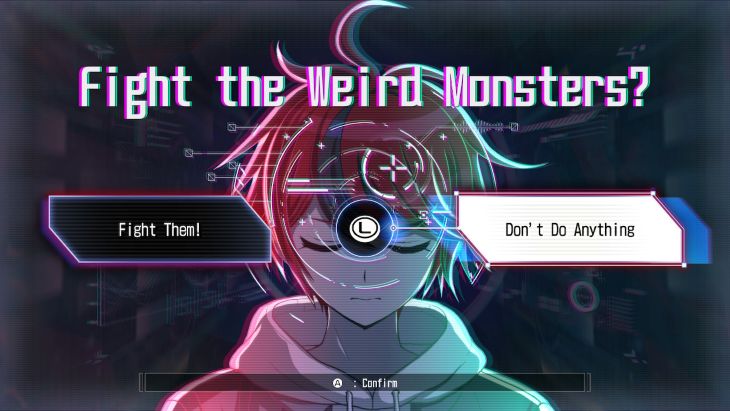
After clearing a certain point in the game, you’ll have access to the flowchart that makes unlocking the other routes much easier. Unfortunately, the flowchart isn’t directly available via the menu and can only be accessed once you’ve cleared an ending in the game. So, once you’ve unlocked the flowchart, making sure that you have a save that has registered that you’ve cleared through the beginning portion of the game is essential. Make sure you don’t accidentally restart the game and overwrite your previous save, because you’ll have to replay through everything again.
Whether the other major routes are worth pursuing comes down to personal taste and whether the world and characters have drawn you in. There are some routes where some characters shine more than others, which is to be expected given the large cast of characters. One minor complaint is that, once you’ve cleared the game enough times, the credits do end up spoiling the names of the main routes in the game. So if you’re looking to complete the game without knowing anything, keep in mind to skip the credits until you’ve finished the game.
The Hundred Line: Last Defense Academy is a mix of visual novel and strategy RPG. In terms of the breakdown between gameplay and story, it’d be around 60%/40%, and a bit less if you’re just talking about combat. The first playthrough of the game doesn’t have many choices that can affect the story. But once you’ve cleared through the game to the point of having access to the route flowchart, there are a lot more choices that can affect the story. Outside of combat, you’re also able to explore around the school, interacting with the other students and classrooms to help prepare you for upcoming battles.
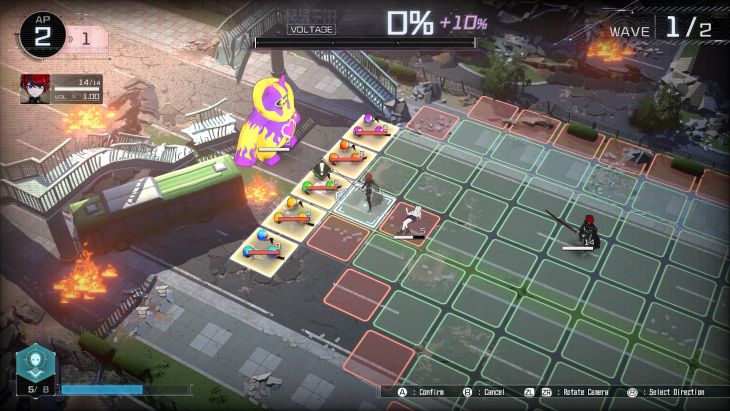
On specific days, the sirens will sound to let you know that the school is under attack. At that point, any of the characters currently unlocked will be available to use. Most battles will be defensive in nature, where you have to protect the school from being attacked. The maps are grid-based, with each unit being able to move a different number of spaces. Each unit is vastly different from the other, with its own specific skills related to how that unit operates. All units shine in different settings (whether you need heavy hitters who can knock out one enemy at a time, or units who can take a chunk of health from a wave of enemies). While some units will always feel better to use than others, there weren’t any units that felt absolutely useless.
Once per turn, you’ll gain a certain amount of AP, which can be used to move and attack with any unit. More times than not, you’ll get a few AP that won’t allow you to make use of your entire team. In order to build up your AP amount, you’ll have to either defeat enemies whose HP is greater than 1, or end your turn early and have your remaining AP amount roll over to the next turn.

You’ll eventually unlock a Voltage bar that increases with every action that you take. Once you hit 100%, your units can use their special attacks. Once you hit this milestone, this is really where the game starts to shine, especially when you’re able to build your Voltage bar up to 300%. Special attacks don’t consume AP, tend to have a wider range of attack than regular skills, and have a higher attack power. The only downside is that, after using a special attack, your unit will be stunned during your next turn. But once you unlock a specific character in your playthrough, using your Voltage skill feels almost broken. Another way to build up your Voltage bar is by using a character’s skill when they are close to death. Special skills automatically become available, even if your Voltage bar is under 100%. However, these particular instances are suicide kills, where your character will die after using their special attack. But along with being able to use a special attack, your Voltage bar will increase by 100%.
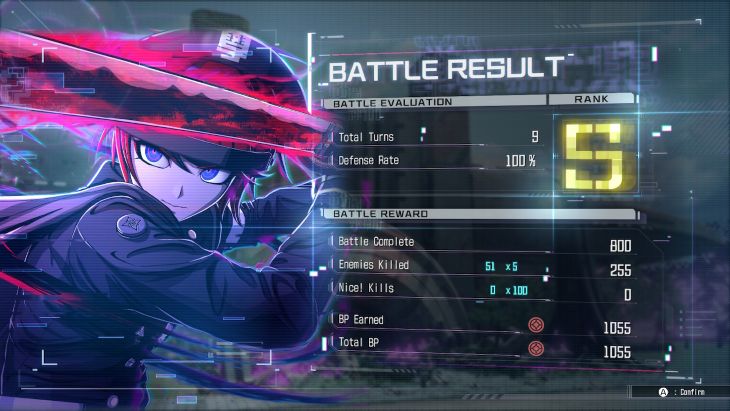
The strategy part of the game is fine. For tactics fans, there isn’t anything to write home about the combat. There are only a couple of maps in the game, with the majority of fights taking place at the school in defensive positions. Given how weak most enemies are, you’ll shave through waves of enemies without breaking a sweat. Even with the commanders entering the fray, few battles will have you working out your strategy muscles. But, being able to cheese battles using the Voltage bar and figuring out the best way to sweep through enemies is fun.
Outside of combat and the visual novel portions, you can explore around the school. Free Time is cut into two times of day: Morning and Afternoon. You’ll be able to perform one major action per time of day. Some of the rooms around the school are mainly decorative, such as the bathrooms and classrooms. But other rooms do have a purpose. You can use the training room to allocate the BP that you earn from battle and the materials you gather from outside to strengthen your skills. You can also play through simulated battle scenarios where you can earn a large amount of BP.
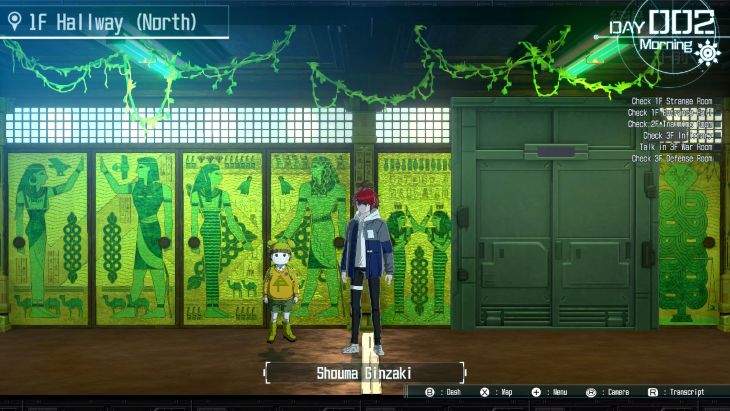
There is a Bio Lab where you can brew items to strengthen your team during battle, and a Metal Shop where you can build and create traps to hold off enemies in battle. The Rec Room allows you to create gifts to give to your classmates to boost your grades (which is required to further unlock your character’s skills). The Garage allows you to add additional passive skills to your abilities in battle. Other rooms have more story influence, such as the War Room and the Infirmary. The rooms aren’t required to be used, although their use will make things much easier down the line, such as the Training Room.
Along with exploring inside the school, you are also able to explore outside the school. The main reason for going outside of the school is to get materials, which you can use to craft items and upgrade your character’s skills. You’ll need an entire day in order to explore outside of the school, so on the days that you only have half a day to explore around, this option is closed off.
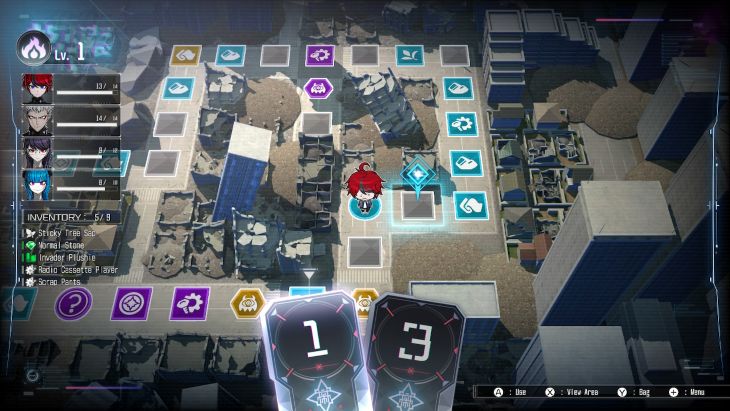
Exploration outside of the school takes place on a board with different tiles that you can travel to. Tiles are divided into types, ranging from material tiles, blank tiles, enemy tiles, and treasure tiles. From there, there are three rankings for tiles (with the exception of blank tiles and treasure tiles): gray tiles are low tier, orange are mid tier, and purple is high tier. The risks are higher for higher-ranking tiles, but you get better rewards. To travel across the board, you’ll choose between one of two cards and select a direction to move your character. The only thing that brings an end to an exploration is if all of your units have 0 HP left. If this happens, you’ll lose out on half of your loot. Speaking of loot, you are only able to bring back nine items per trip. Any items you pick up past that limit, you’ll have to drop one in order to make room.

Explorations are the only way to get materials, so if you find yourself crafting a lot of items within the school, you’ll find that your stashes will run out faster. But if you find yourself not making use of the facilities around the school, explorations do end up feeling a bit useless. Add that to the fact that some story-required missions require you to go on explorations, and most of your materials needs will be more than fulfilled.
Rui Komatsuzaki, the character designer for the Dangan Ronpa series, is the designer for the characters in The Hundred Line: Last Defense Academy. The designs fit right at home with the artist’s other designs: heavily stylized and even wacky at times. No two characters look the same and while some characters stand out more than others, none of them are bland. Most of the game is 2D graphics, with 3D models being used during combat. The 2D sprites are like their Dangan Ronpa counterparts, with multiple sprites for every single emotion that the characters could feel. Even hours into a playthrough, there are new sprites that you’ll see for the first time.
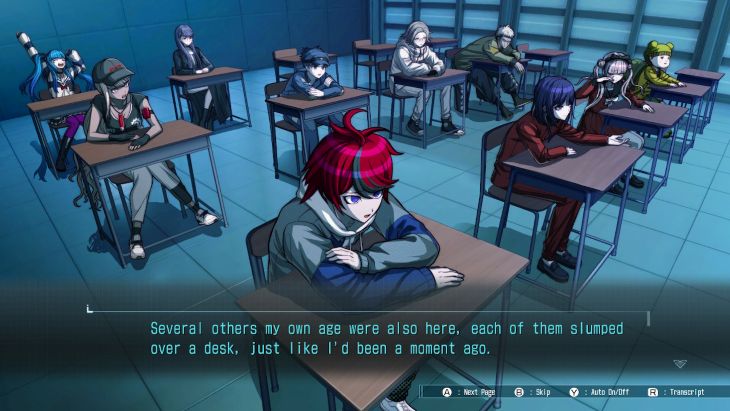
The art shines in the CG artwork that is unlocked during certain moments of the game. The art is great, from the more relaxed moments within the school to the intense special attack profile art. But the 3D art doesn’t slack either when it comes to the attack animations. Outside of combat, you’ll also see Takumi’s 3D model while running around the school. Each of the locations of the room is grandiose in its own way. While the actual outside of the school is a bit boring, the inside is intense.
Music and Voice Acting
Much like the artwork and overall styling of the game, the music does a lot of heavy lifting, elevating already intense moments. Whether it’s as simple as the transitional music that plays during the character’s transitions to the final battle music, the soundtrack is amazing. The small moments hit just as much as the big ones. The guitar riffs that play in many of the battle songs are especially to die for, no pun intended.
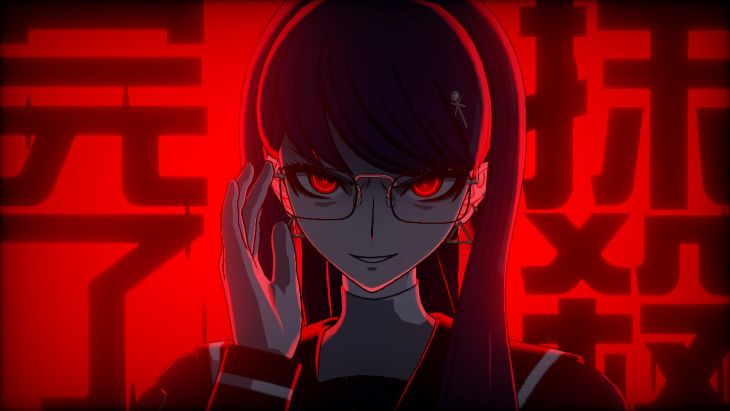
As for the voice cast, there are both English and Japanese voices that are available to listen to. The game is about 50% voice-acted, with voices in animated cutscenes and key moments in the visual novel portions. Otherwise, it’s your standard mix of grunts, groans, and moans that we’ve all come to love (or hate). The cast did a stellar job, really selling the hard-hitting moments in particular. If there is one thing that can’t be said, it’s that the voice acting is halfhearted.
Conclusion
The Hundred Line: Last Defense Academy is a gargantuan game that is truly an experience to play through. But of course, this is a niche game that leans heavily into its influences. Anime tropes galore, obvious plot twists along with twists that truly come out of nowhere, and endings that are sure to stab you right in the heart while also leaving you with a bunch of questions. While the long amount of hours may be a deterrent for those not looking for a huge time sink, this is truly a unique experience that I would say everyone should at least take a second look at if it’s caught your eye. The team really created something special with this game, and if nothing else, you’re in for a crazy ride.
The Hundred Line: Last Defense Academy gets a 9/10.